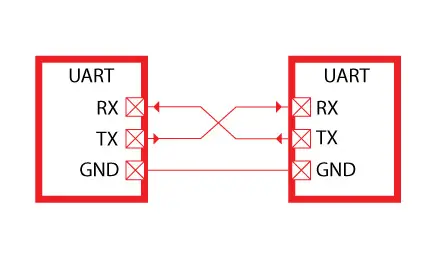Understanding the UART Protocol
UART (Universal Asynchronous Receiver-Transmitter) is a widely used asynchronous serial communication protocol for exchanging data between devices, such as FPGAs and computers.
Unlike synchronous protocols, UART does not use a shared clock signal. Instead, data is sent at a predefined transmission rate (baud rate) agreed upon by both devices. Each transmitted byte includes:
-
1 start bit
-
8 data bits
-
1 stop bit
During transmission, the data is sent bit by bit through the TX (transmit) line, while the receiving device reads these bits from the RX (receive) line, synchronizing with the established timing.
Below is a placeholder for an image that illustrates how UART works (start bit, data bits, stop bit, idle state, etc.).


No Comments